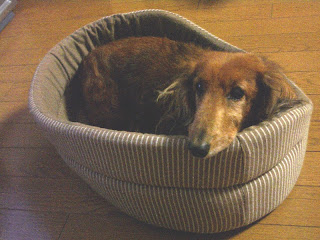Since I was totally a beginner volunteer worker, the food I brought was only 6 rice balls, a bottled water, bottled teas and oat snacks.
Most of my "house mates" were experts; they brought vegetables, noodles, rice, stove burners, pans, dixies, bowls, mugs and even chopsticks. They told me "Eating enough food is a fundamental of volunteer workers. Without enough energy, you cannot work or encourage local people". In fact it was right. We need to give them the strength needed for reconstruction of their town.
Some people took me to the hill behind our house.
What we did was.... looking for food! Yes, wild food picking!
We met local people on the hill by accident. As supermarkets in the area are still closed, it's difficult to get enough ingredients locally. For these occasions it's good to go back to the old days, using the ancient wisdom. Although, we need to be careful with wild flowers since some of them can cause toxic reactions. Luckily I was with a guy who knows well about them.
The leaves of the photo above are "Mitsuba"- trefoil. It's delicious to put them on soups or boil them and eat with soy sauce.
This is "Yomogi"- mugwort. We eat them boiled and mixed with soy sauce.
"Tsukushi" (Yellow tall ones)- horsetail. Again we boil them.
Ingredients of our dinner!
They brought back a bamboo stick which had been left in the forest.
What are they using this for...?
They taught me how to make bamboo chopsticks. (They knew I didn't bring my chopsticks.) It was like a craft-work class.
Boys love craft works... when we started, other house members joined us one after another.
I never thought of me making things from bamboo in my life...
Whittling a bamboo stick with an awkward manner... and making MY chopsticks. It was really fun!
And my "master" made a bamboo bottle and glasses.
After the class, we started cooking.
Dinner!
And long-awaited drinking time!
One member brought sake, and we drank it from a fresh bamboo bottle and glasses.
After pouring sake into the bottle, leave it for 30 minutes, and then it's ready to drink.
Strangely, sake had become mellow and tasted lovely!
This is how I survived with the limited resources.
I shouldn't forget what I experienced here; my staying here was merely a "trial version".
Disaster victims who lost their family members and friends live their life in even worse conditions for almost two months now.
Nature destroyed our normal life, but we still enjoy the blessing of the nature.
We couldn't help relying on it.
It made me humble and reflect on my profligate lifestyle.
I learned a lot and I had such a productive time here.













































